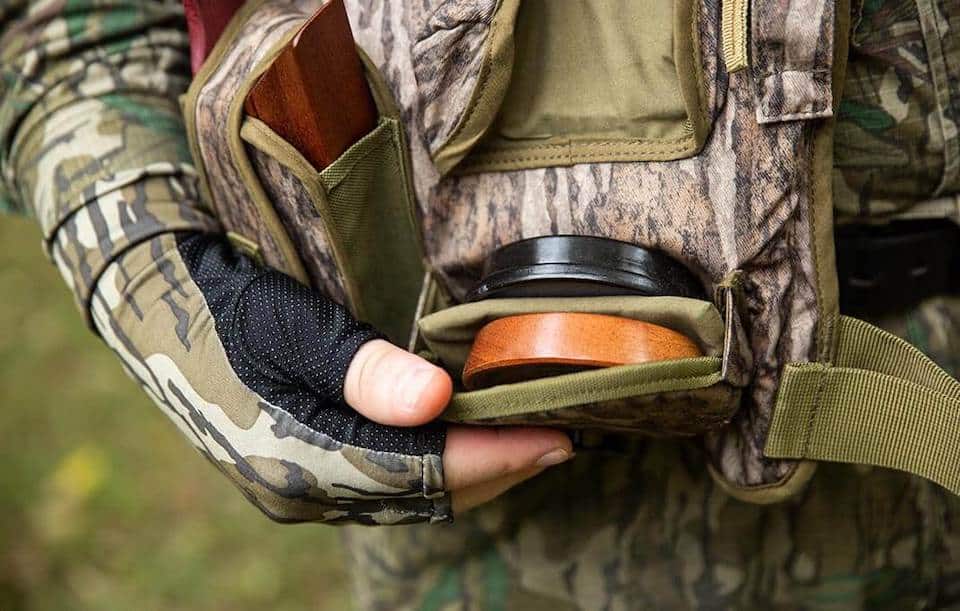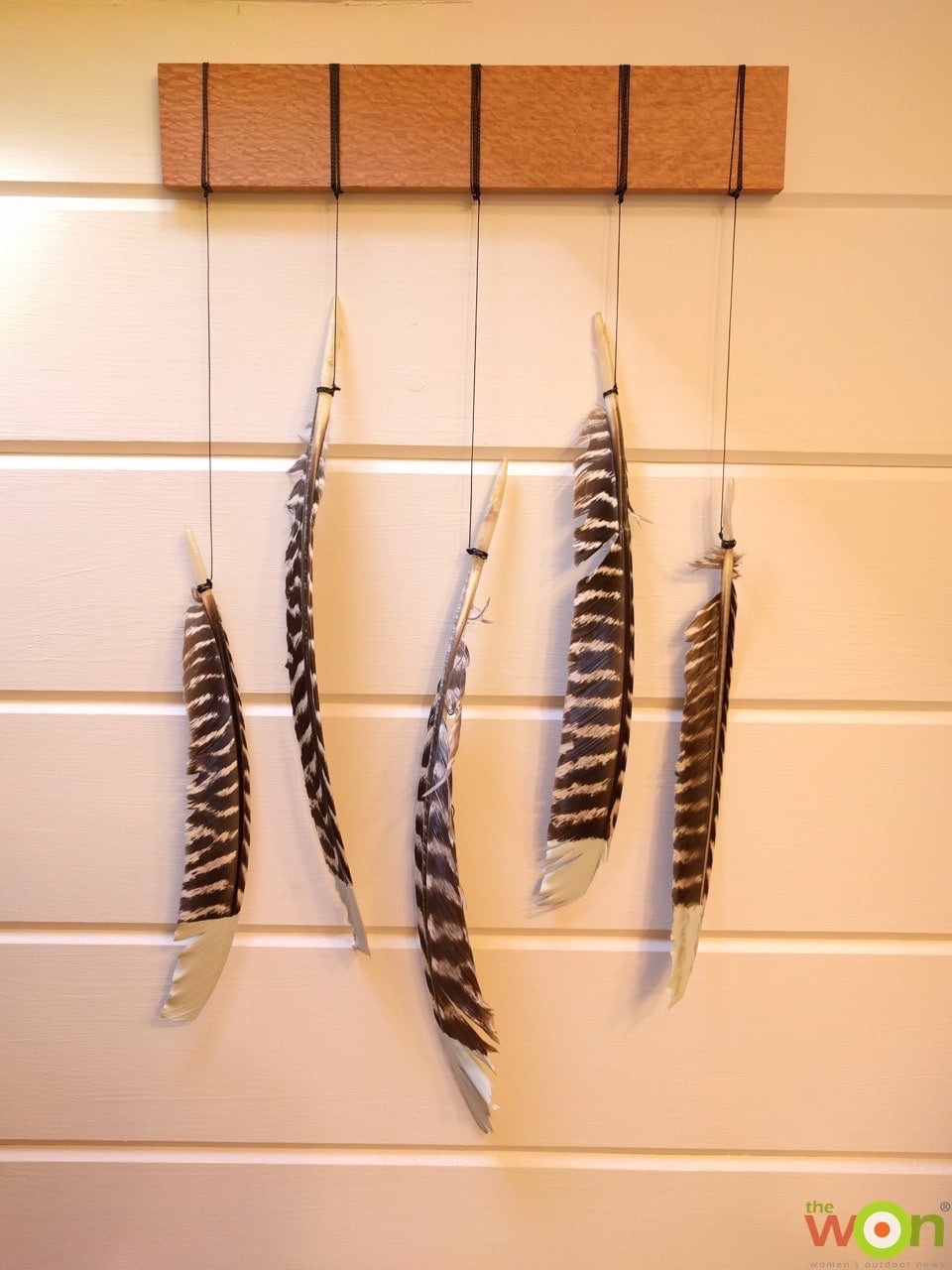Turkey season is one of our favorite times here at The WON. Even if you don’t hunt turkeys, who doesn’t enjoy seeing them in the wild? Throughout the years, we have spent many hours in the woods and fields, hunting these elusive beautiful birds. We also have prepared delicious meals as a result of our harvests, and even had some fun crafting with turkey feathers. Check out some helpful advice below in this turkey time round-up, featuring hunting, cooking and crafting the great American bird.
Hawaiian hunting guide Emily Perreira gives us sage advice in 4 tips as to how to even get started hunting for turkeys in this post, “First Time Turkey Hunting Tips.”

We particularly like this advice, in regard to the “set up”:
“Gobblers are extremely active in the morning and late afternoons, as they are looking for hens. Therefore, these are the prime times to call a turkey in. As you start calling in a gobbler and you know the gobbler is getting closer, you want to get yourself set up to shoot. During these active times, gobblers (many times) will come running in. Everything happens so fast (turkeys can run up to 25 mph), so you want to make sure you give yourself enough time to get situated as the gobbler is getting closer. Find a good place to set up with coverage, whether it’s by a tree or logs. That way you can set up and allow the gobbler to come into you, while being hidden within the natural environment. You want to see him first, before he sees you. Because turkeys have such great vision, you don’t want to move and set up when a turkey is too close, as there is a great chance that they’ll see you. Within your set up, make sure you also have a good rest. Gobblers strutting in towards me (or even sometimes coming in at a dead sprint) always makes my heart pound, so speaking from experience, you want to be as steady as possible. If you have to move, do it when he’s turned away from you, and make sure he doesn’t have an entourage of sentry hens onboard.”
If you’re wondering what to wear when turkey hunting, check out this vest review by Jess Rice, founder of wildHERness. She writes, “While I don’t know that Mr. Primos had the exact same sentiment in mind as my husband when designing this turkey vest, but with the number of functional pockets in his vest, that’s what I’m imagining. Even the pockets have pockets, keeping your slate and striker or lid and box separate for silent carry through the woods. Those pockets boast a magnetic closure, keeping your gear safe and closing silently. There’s a pocket for your hydration bladder, a pocket for your license, and even a pocket designed to hold a Thermacell! Interior zippered mesh pockets offer even more secure storage.”

Along with camo, a face mask and good boots, if you can swing the purchase of a turkey vest, get one. And then, try to remember what you have put into all the pockets!
When Emily Monroe sent us this recipe, we thought, “Hmmm. Interesting.” We’d never even thought of using wild turkey in a bacon-wrapped meatloaf before now, but wow! It looks delish. Emily even ground her own wild turkey. She suggested, “A note about grinding the turkey – I used a KitchenAid meat grinder attachment for my stand mixer. It worked great for me. I ground the meat three times. This worked well for two reasons. First, the meat became very tender as it was ground. Second, the grinding process helped me uncover some pieces of shot that I missed in my initial meat cleaning. That was a lifesaver … or should I say, bite-saver.”

Of course, you may substitute wild turkey for domestic turkey in just about any recipe. We thought you could even sub it into Kristy Crabtree’s mini-meat pies, which she originally made with antelope. You could use either ground or shredded turkey.

What to do with all those beautiful turkey feathers?
Here comes Emily Monroe again, who, after making meatloaf, decided to whip up this lovely wild turkey feather art. She explains the thought-process behind this rather original design: “When I tagged my first turkey in May 2015, I saved the entire fan and most of the wing feathers from my 20-pound tom, knowing I wanted to make something with those feathers. My mother-in-law is a calligrapher and she requested that I save most of the wing feathers for quillwork, which I happily did. So I took the 5 wing feathers I had left to make a piece of wall art, using a “dip-dye” method to add some color to the otherwise black-and-white feathers.” We think it’s lovely.

And then, there’s the ultimate turkey feather craft: Anna and her sister designed and wore Hussar wings, based on the winged Hussar history, and crafted out of several turkey wings — donated to the girls from a Missouri National Wild Turkey Federation member, Darren Jones. Anna writes, “The Hussars are thought to have used eagle feathers for their wings, but turkey feathers make for a great substitute. … When your wings are finished, you can make a belt system to mount them to you. We chose to mount ours to our bikes using scraps of wood attached to the bike frame. The Hussars were a cavalry unit, so our bikes serve as the horses for our costume. When we are finished wearing the wings, we plan to mount them on our bedroom walls.”

Here’s another interesting way to use turkey feathers. We featured Courtenay Conning, who made unique bows out of turkey feathers.

Whatever you decide to do with either turkey meat or feathers, we’d like to know! And, if you need more advice about turkey hunting, check out our past posts here.
Publisher/Editor Barbara Baird is a freelance writer in hunting, shooting and outdoor markets. Her bylines are found at several top hunting and shooting publications. She also is a travel writer, and you can follow her at https://www.ozarkian.com. View all posts by Barbara Baird